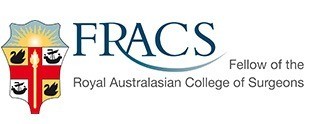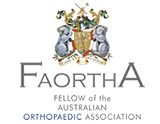
Peripheral Vascular Disease
Peripheral vascular disease (PVD) also referred to as peripheral artery disease is the most common disease which occurs when the blood vessels that supply blood to the limbs and other organs of our body are partially or completely blocked due to plaque build-up. This condition is called atherosclerosis. Plaque forms out of the substances present in blood such as fat, cholesterol, calcium and fibrous tissue. These plaque deposits gradually harden and narrow down the arteries. This limits the oxygen-rich blood supply to the parts of your body. The most commonly affected blood vessels because of PVD are the arteries of legs.
Causes and Risk Factors
The most common cause of PVD is atherosclerosis. Other causes include:
- Formation of blood clot (thrombus/emboli) that may block a blood vessel.
- High blood sugar levels with associated high cholesterol may damage the blood vessels over a long term.
- Inflammation of the arteries (arteritis) can weaken and narrow down the arteries.
- Infections such as salmonellosis and syphilis can infect and damage the blood vessels.
Several factors are considered to increase the risk of developing PVD and they include family history of heart attacks or strokes, increased age (>50 years), overweight, sedentary lifestyle, smoking, diabetes, hypertension, dyslipidaemia, and past history of coronary heart disease, heart attack, or stroke.
Signs and Symptoms
The most common symptom of PVD in the legs is a dull, cramping type of pain in the calf muscles, thighs, or hips. The pain appears while walking or climbing up the stairs and goes away on rest. This pain is called intermittent claudication and it usually worsens at night. Other symptoms experienced by patients with PVD are numbness or tingling sensation in the legs, weak or absent pulses in the feet or legs, burning sensation in the feet during rest, sores or wound on the feet or legs that do not heal or heal slowly, discoloration of skin on the legs, poor growth of toe nails and hairs on the legs, and erectile dysfunction in men who also have diabetes.
Diagnosis
Diagnosed for PVD includes your medical and family histories, physical examination, and the diagnostic tests. Physical examination involves checking for weak or absent pulses, abnormal sounds (bruits) in the narrowed artery and comparison of blood pressure between affected and the normal limb. Some diagnostic tests may be done which include:
- Ankle-brachial index: Ankle-brachial index (ABI) compares blood pressure of your ankle to blood pressure in the arm.
- Doppler ultrasound: It is done to check for a blocked artery, where blood flow through the artery will be determined. It also helps in determining the severity of PVD.
- Treadmill Test: This test is done to gauge the severity of symptoms and to monitor the level of exercise that elicits the symptoms.
- Magnetic Resonance Angiogram: Magnetic resonance angiogram (MRA) makes use of magnetic and radio waves to produce images of blood vessels. It can detect the location of the blockage in the blood vessel.
- Arteriogram: This test locates the blocked artery. The test involves injection of a dye into your artery, followed by which an X-ray is taken. X-ray shows the location and extent of blockage in the artery.
- Blood Tests: Blood tests are done to diagnose conditions such as diabetes and high blood cholesterol.
Treatment
The treatment for PVD includes lifestyle changes, medicines, and surgery. The goals of PVD treatment are to reduce symptoms, improve quality of life and to prevent complications.
- Lifestyle Changes: Stop smoking as smoking increases your risk of PVD by four times. Exercise regularly and be physically active. Get your blood pressure, cholesterol, and blood sugar level monitored regularly to avoid the risk of stroke and heart diseases. Eat a well-balanced diet with lower amount of fats and salt.
- Medicines: Your doctor may prescribe medicines to lower high cholesterol and blood pressure levels. Also, medicines that prevent formation of blood clots and relieve the pain may be given.
Surgery
- Bypass Grafting: This surgery is done if the blood flow in your leg is obstructed. In this procedure, a graft (blood vessel taken from another part of your body or an artificial tube) is placed to bypass the blood flow around the blockage.
- Angioplasty and Stenting: Angioplasty is a procedure done to restore blood flow through a blocked artery. It involves passage of a catheter with a deflated balloon at its tip into a blocked artery. The balloon is then inflated in order to displace the plaque outwards. This restores the blood flow by widening the artery. In addition, a stent may be placed in the artery to keep it open after angioplasty is done.
- Atherectomy: Atherectomy is a procedure in which a catheter with a small cutting device is passed into the blocked artery. This device breaks up the plaque into bits which are washed away with the bloodstream or through the catheter.












